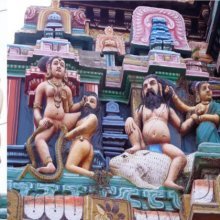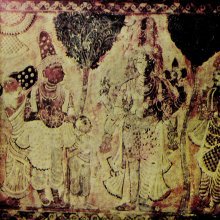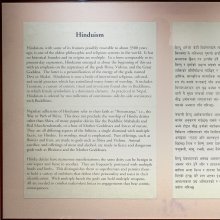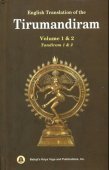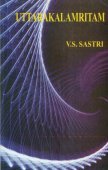Shaiva, Śaiva, Śaivā: 21 definitions
Introduction:
Shaiva means something in Hinduism, Sanskrit, Marathi, Jainism, Prakrit, Hindi. If you want to know the exact meaning, history, etymology or English translation of this term then check out the descriptions on this page. Add your comment or reference to a book if you want to contribute to this summary article.
The Sanskrit terms Śaiva and Śaivā can be transliterated into English as Saiva or Shaiva, using the IAST transliteration scheme (?).
Alternative spellings of this word include Shaiv.
Images (photo gallery)
In Hinduism
Purana and Itihasa (epic history)
Source: Cologne Digital Sanskrit Dictionaries: The Purana Index1a) Śaiva (शैव).—The sin of being of an ardent type.*
- * Brahmāṇḍa-purāṇa IV. 8. 44.
1b) One day of Śiva equals 100 years of Brahmā.*
- * Matsya-purāṇa 290. 21.
1c) One of the six darśanas.*
- * Vāyu-purāṇa 104. 16.
1d) In the Sīmantasīma of the personified Veda.*
- * Vāyu-purāṇa 104. 81.

The Purana (पुराण, purāṇas) refers to Sanskrit literature preserving ancient India’s vast cultural history, including historical legends, religious ceremonies, various arts and sciences. The eighteen mahapuranas total over 400,000 shlokas (metrical couplets) and date to at least several centuries BCE.
Shaivism (Shaiva philosophy)
Source: DSpace at Pondicherry: Siddha Cult in Tamilnadu (shaivism)Śaiva (शैव).—According to Śaṅkarācārya’s work there were four Śaiva schools viz.,
- Śaiva,
- Pāśupata,
- Kārukasiddhāntin
- and Kāpālika.
Some comparatively later Purāṇas, like Śivapurāna, qualifies the Śaiva schools as following the Siddhāntamārga and mentions the Kālāmukha Śaivas as Mahāvratadharins.
Source: Shodhganga: Mantra-sādhana: Chapter One of the KakṣapuṭatantraŚaiva (शैव) is the name of an Āgama or Tantra mentioned in the Kakṣapuṭatantra verse 1.5-7.—“At a previous time, when Pārvatī asked him, Śaṅkara told of the attainments of vidyā in the wide worldly life, in various ways. I observed each teaching taught also by the troops of Gods, Siddhas (those who have attained supernatural power), Munis (saints), Deśikas (spiritual teachers), and Sādhakas (tantric practicioners). They are [, for example]: Śaiva... I shall carefully extract all the above-mentioned āgamas, which are transmitted from mouth to mouth, like butter extracted from coagulated milk”.
Source: Sri Kamakoti Mandali: The Sects of śaivasŚaiva (शैव) refers to a follower of Śaivism.—The Kriyāpāda of Candrajñāna (Candrajñānāgama) enumerates seven varieties of Śaivas:
- Anādiśaiva,
- Ādiśaiva,
- Mahāśaiva,
- Anuśaiva,
- Avāntaraśaiva,
- Pravaraśaiva,
- Antyaśaiva,
Thus based on varṇa, the above seven-fold division is described in various āgamas.
Based on ācāra, a four-fold categorization is described:
- Sāmānyaśaiva,
- Miśraśaiva,
- Śuddhaśaiva,
- Vīraśaiva.

Shaiva (शैव, śaiva) or Shaivism (śaivism) represents a tradition of Hinduism worshiping Shiva as the supreme being. Closely related to Shaktism, Shaiva literature includes a range of scriptures, including Tantras, while the root of this tradition may be traced back to the ancient Vedas.
Pancaratra (worship of Nārāyaṇa)
Source: eScholarship: Chapters 1-14 of the Hayasirsa PancaratraŚaiva (शैव) represents an undesirable Ācārya, according to the 9th-century Hayaśīrṣa-pañcarātra Ādikāṇḍa chapter 3.—The Lord said:—“I will tell you about the Sthāpakas endowed with perverse qualities. He should not construct a temple with those who are avoided in this Tantra. [...] He with whom one constructs a temple should not be a Śaiva, or a Saura, nor a Naiṣṭhika, nor a naked one, nor born of mixed marriage, nor unclean, old, or one who is of a despicable form or marked by great sin. [...] A god enshrined by any of these named above (viz., śaiva), is in no manner a giver of fruit. If a building for Viṣṇu is made anywhere by these excluded types (viz., śaiva) then that temple will not give rise to enjoyment and liberation and will yield no reward, of this there is no doubt”.

Pancaratra (पाञ्चरात्र, pāñcarātra) represents a tradition of Hinduism where Narayana is revered and worshipped. Closeley related to Vaishnavism, the Pancaratra literature includes various Agamas and tantras incorporating many Vaishnava philosophies.
Shaktism (Shakta philosophy)
Source: Google Books: ManthanabhairavatantramŚaiva (शैव) refers to one of the spiritual disciplines (darśana—systems) issued from the limbs of the body of the Goddess, according to the Manthānabhairavatantra, a vast sprawling work that belongs to a corpus of Tantric texts concerned with the worship of the goddess Kubjikā.—[...] All spiritual disciplines, whatever the tradition, are necessarily grounded in the same energy of the Śāmbhava state. They issue, as the texts put it, from the limbs of the body of the goddess who is this energy. These range from the lowest extremity—the left big toe—where Buddhism originates, to the highest—the End of Sixteen—where the Śāmbhava state is attained which is the source of the Kubjikā tradition. The systems (darśana) and their corresponding places of origin in the Goddess’s body are as follows: [6) Śaiva—the throat—kaṇṭhadeśa, ...].
Source: Kamakoti Mandali: The Yoginis of Narasimha VyuhaŚaivā (शैवा) is the name of a Mātṛkā-Śakti created by Mahārudra in order to control the plague of demons created by Andhakāsura.—Accordingly, Andhaka-Asura tried to kidnap Umā (Devī Pārvatī), and was fiercely attacked by Mahārudra who shot arrows at him from his mahāpināka. when the arrows pierced the body of Andhakāsura, drops of blood fell to earth and from those drops, thousands of Andhakas arose. To control this plague of demons, Mahārudra created Mātṛkā-Śaktis [viz., Śaivā] and ordered them to drink the blood of the demons and drain them dry.
Source: Kamakoti Mandali: Nrisimha matrika-mandalaŚaivā (शैवा) refers to one of the various Mātṛkā-Śaktis created by Rudra in order to destroy the clones that spawned from Andhaka’s body.—Accordingly, [...] Andhakāsura attempted to abduct Girājanandinī (Pārvatī) and thus ensued a fierce battle between Andhakāsura and the great Rudra, the Lord of Umā. Like raktabīja, every drop of blood that fell from the body of Andhaka created another Asura like him and in no time, the entire world was filled with Andhakas. To destroy the growing number of Andhakas, Rudra created innumerable Mātṛkā-Śaktis [viz., Śaivā]. These Śaktis of immense power at once began to drink every drop of blood that flowed from the body of Andhaka, but they could still not effectively contain the emergence of more and more demons.

Shakta (शाक्त, śākta) or Shaktism (śāktism) represents a tradition of Hinduism where the Goddess (Devi) is revered and worshipped. Shakta literature includes a range of scriptures, including various Agamas and Tantras, although its roots may be traced back to the Vedas.
Ayurveda (science of life)
Nighantu (Synonyms and Characteristics of Drugs and technical terms)
Source: WorldCat: Rāj nighaṇṭuŚaiva (शैव) is another name for Vasuka, an unidentified medicinal plant, possibly identified with either Premna barbata Wall. or Calotropis gigantia, according to verse 5.123-124 of the 13th-century Raj Nighantu or Rājanighaṇṭu. The fifth chapter (parpaṭādi-varga) of this book enumerates sixty varieties of smaller plants (kṣudra-kṣupa). Together with the names Śaiva and Vasuka, there are a total of eight Sanskrit synonyms identified for this plant.

Āyurveda (आयुर्वेद, ayurveda) is a branch of Indian science dealing with medicine, herbalism, taxology, anatomy, surgery, alchemy and related topics. Traditional practice of Āyurveda in ancient India dates back to at least the first millenium BC. Literature is commonly written in Sanskrit using various poetic metres.
Languages of India and abroad
Marathi-English dictionary
Source: DDSA: The Molesworth Marathi and English Dictionaryśaiva (शैव).—a (S) That worships Shiva as the Supreme deity. 2 Relating to Shiva.
Marathi is an Indo-European language having over 70 million native speakers people in (predominantly) Maharashtra India. Marathi, like many other Indo-Aryan languages, evolved from early forms of Prakrit, which itself is a subset of Sanskrit, one of the most ancient languages of the world.
Sanskrit dictionary
Source: DDSA: The practical Sanskrit-English dictionaryŚaiva (शैव).—a. (-vī f.) [शिवो देवताऽस्य अण् (śivo devatā'sya aṇ)] Relating to the god Śiva.
-vaḥ 1 Name of one of the three principal Hindu sects.
2) A member of the Śaiva sect.
3) The thorn-apple.
-vam Name of one of the eighteen Purāṇas, of a Śāstra or Tantra.
Source: Cologne Digital Sanskrit Dictionaries: Shabda-Sagara Sanskrit-English DictionaryŚaiva (शैव).—mfn.
(-vaḥ-vī-vaṃ) Relating or appertaining to the god Siva. m.
(-vaḥ) A worshipper of Siva. n.
(-vaṃ) An aquatic plant, (Vallisneria octandra.) E. śiva the deity, and aṇ aff.
Source: Cologne Digital Sanskrit Dictionaries: Benfey Sanskrit-English DictionaryŚaiva (शैव).—i. e. śiva + a, I. adj. Relating, belonging, to Śiva, [Rāmāyaṇa] 1, 66, 19. Ii. m. A worshipper of Śiva. Iii. n. A plant, Vallisneria octandra.
Source: Cologne Digital Sanskrit Dictionaries: Cappeller Sanskrit-English DictionaryŚaiva (शैव).—[feminine] ī relating to Śiva, Śiva’s; [masculine] a worshipper of Ś.
Source: Cologne Digital Sanskrit Dictionaries: Monier-Williams Sanskrit-English Dictionary1) Śaiva (शैव):—1. śaiva mf(ī)n. ([from] śiva) relating or belonging or sacred to the god Śiva, coming or derived from Śiva, [Rāmāyaṇa; Kathāsaritsāgara; Purāṇa] etc.
2) m. [patronymic] [from] śiva, [Pāṇini 4-1, 112]
3) ‘a worshipper or follower of Śiva’, Name of one of the three great divisions of modern Hindūism (the other two being the Vaiṣṇavas and Śāktas, qq.vv.; the Śaivas identify Śiva-rather than Brahmā and Viṣṇu-with the Supreme Being and are exclusively devoted to his worship, regarding him as the source and essence of the universe as well as its disintegrator and destroyer; the temples dedicated to him in his reproducing and vivifying character [as denoted by the Liṅga q.v.] are scattered all over India; the various sects of Śaivas are described in [Religious Thought and Life in India 86 etc.])
4) a particular religious rite in honour of Durgā (consisting of devout meditation and prostration of the body), [Monier-Williams’ Sanskrit-English Dictionary]
5) the thorn-apple, [cf. Lexicographers, esp. such as amarasiṃha, halāyudha, hemacandra, etc.]
6) a kind of plant (= vasuka), [cf. Lexicographers, esp. such as amarasiṃha, halāyudha, hemacandra, etc.]
7) (with Jainas), Name of the fifth black Vāsudeva, [cf. Lexicographers, esp. such as amarasiṃha, halāyudha, hemacandra, etc.]
8) n. auspiciousness, welfare, prosperity, [Bhāgavata-purāṇa]
9) Name of a Śāstra and of a Tantra and of a Purāṇa (See below).
10) 2. śaiva Vṛddhi form of śiva in [compound]
11) 3. śaiva n. a kind of aquatic plant, Blyxa Octandra, [cf. Lexicographers, esp. such as amarasiṃha, halāyudha, hemacandra, etc.]
12) 4. śaiva [wrong reading] for śaiba.
Source: Cologne Digital Sanskrit Dictionaries: Yates Sanskrit-English DictionaryŚaiva (शैव):—[(vaḥ-vī-vaṃ)] 1. m. A worshipper of Shiva; Valisneria. a. Of Shiva.
[Sanskrit to German]
Sanskrit, also spelled संस्कृतम् (saṃskṛtam), is an ancient language of India commonly seen as the grandmother of the Indo-European language family (even English!). Closely allied with Prakrit and Pali, Sanskrit is more exhaustive in both grammar and terms and has the most extensive collection of literature in the world, greatly surpassing its sister-languages Greek and Latin.
Hindi dictionary
Source: DDSA: A practical Hindi-English dictionaryŚaiva (शैव) [Also spelled shaiv]:—(nm) a worshipper/devotee of Lord Shiv; (a) pertaining or belonging to Lord Shiv.
...
Prakrit-English dictionary
Source: DDSA: Paia-sadda-mahannavo; a comprehensive Prakrit Hindi dictionarySaiva (सैव) in the Prakrit language is related to the Sanskrit word: Saciva.
Prakrit is an ancient language closely associated with both Pali and Sanskrit. Jain literature is often composed in this language or sub-dialects, such as the Agamas and their commentaries which are written in Ardhamagadhi and Maharashtri Prakrit. The earliest extant texts can be dated to as early as the 4th century BCE although core portions might be older.
Kannada-English dictionary
Source: Alar: Kannada-English corpusŚaiva (ಶೈವ):—
1) [adjective] of or relating to Śiva.
2) [adjective] of or relating to Śaiva philosophy, religion, etc.
--- OR ---
Śaiva (ಶೈವ):—
1) [noun] an āgama that upholds the supremacy of Śiva.
2) [noun] any of several religions or cults of a religion, that worship of and, uphold the supremacy of, Śiva.
3) [noun] a follower of any of these religions or cults.
4) [noun] (dance.) a partricular standing posture in which the left foot is kept in natural position and the toes of the right are bent forward and placed on the floor while the heal is raised up.
--- OR ---
Saiva (ಸೈವ):—
1) [adjective] (correctly, ಶೈವ [shaiva]) 1. of or relating to Śiva.
2) [adjective] of or relating to Śaiva philosophy, religion, etc.
--- OR ---
Saiva (ಸೈವ):—[noun] (correctly, ಶೈವ [shaiva]) a follower of any of Śiva religions or cults.
Kannada is a Dravidian language (as opposed to the Indo-European language family) mainly spoken in the southwestern region of India.
Nepali dictionary
Source: unoes: Nepali-English DictionaryŚaiva (शैव):—adj. related to Shiva or Shaivism; n. 1. name of one of the three principal Hindu sects (Shaiva, Shakta & Vaishnava); Hindu denomination devoted to the worship of Shiva; 2. member of the shiva sect; 3. a worshipper of Shiva;
Nepali is the primary language of the Nepalese people counting almost 20 million native speakers. The country of Nepal is situated in the Himalaya mountain range to the north of India.
See also (Relevant definitions)
Starts with (+80): Saivala, Saivan, Shaiva madhava, Shaiva-diksha, Shaiva-siddhanta, Shaivabhashya, Shaivacapa, Shaivacarya, Shaivacarya-kshetra, Shaivachapa, Shaivacharya, Shaivadarshana, Shaivadharmakhandana, Shaivadharmamandana, Shaivadhibhumi, Shaivadhikalinga, Shaivadikshavidhana, Shaivagama, Shaivagamasarasamgraha, Shaivagamashaucadipika.
Ends with (+4): Adishaiva, Amtarashaiva, Anadishaiva, Antyashaiva, Anushaiva, Ashaiva, Avamuktashaiva, Avantarashaiva, Avimuktashaiva, Gopinatha shaiva, Kashmirashaiva, Krishna shaiva, Mahashaiva, Margashaiva, Mishrashaiva, Nilakantha shaiva, Padashaiva, Pravarashaiva, Purvashaiva, Samanyashaiva.
Full-text (+4748): Shaivism, Somasiddhanta, Ekanetra, Somasiddhantin, Pravarashaiva, Shaivagama, Antyashaiva, Aurdhvasrotasika, Agama, Shaivam, Virashaiva, Shivaprakasha, Hara, Atinakartta, Vratavarjita, Kalakarnimuttirai, Kalamukar, Ekarudra, Caivavati, Vishesha.
Relevant text
Search found 134 books and stories containing Shaiva, Śaiva, Saiva, Śaivā; (plurals include: Shaivas, Śaivas, Saivas, Śaivās). You can also click to the full overview containing English textual excerpts. Below are direct links for the most relevant articles:
Shat-cakra-nirupana (the six bodily centres) (by Arthur Avalon)
A History of Indian Philosophy Volume 5 (by Surendranath Dasgupta)
Part 1 - The Literature and History of Southern Śaivism < [Chapter XXXIV - Literature of Southern Śaivism]
Part 1 - History and Literature of Vīra-śaivism < [Chapter XXXV - Vīra-śaivism]
Part 1 - The Śaiva Philosophy in the Śiva-mahāpurāṇa < [Chapter XXXVII - The Śaiva Philosophy in the Purāṇas]
Hindu Pluralism (by Elaine M. Fisher)
The Public Theologians of Early Modern South India < [Chapter 1 - Hindu Sectarianism: Difference in Unity]
Vaidika and Śaiva < [Chapter 1 - Hindu Sectarianism: Difference in Unity]
The Practical Applications of Textual Criticism < [Chapter 3 - Constructing Sectarian Identities in Early Modern South India]
The Lingayats-Their Religion and Literature < [May 1937]
Ananda Coomaraswamy and the Tamil < [July – September, 1980]
Bhaavas in Vaishnavism and Saivism: A Comparative Study < [October – December, 1981]
Lakulisha-Pashupata (Philosophy and Practice) (by Geetika Kaw Kher)
Traces of Lakulisa-Pasupata order in North India < [Chapter 2 - Spread and Transition]
Locating the Lakulisa-Pasupata rites in the world of Saivite rituals < [Chapter 3 - The Ritualistic Context]
Kalamukhas and Virasaivas: The present day tradition < [Chapter 2 - Spread and Transition]
Kavyamimamsa of Rajasekhara (Study) (by Debabrata Barai)
Part 4.1 - Nature and divisions of Vākya (literary speech) < [Chapter 5 - Analyasis and Interpretations of the Kāvyamīmāṃsā]
Part 5 - Rājaśekhara’s Province and Religion < [Chapter 1 - Introduction]
Part 7.11 - Poetic conventions regarding to the Colours < [Chapter 5 - Analyasis and Interpretations of the Kāvyamīmāṃsā]
Related products
(+1 more products available)
